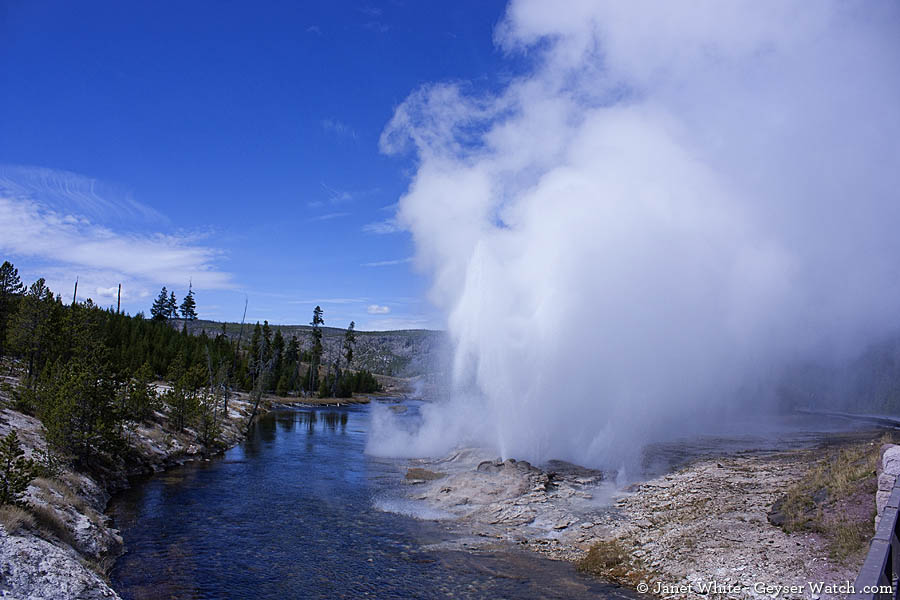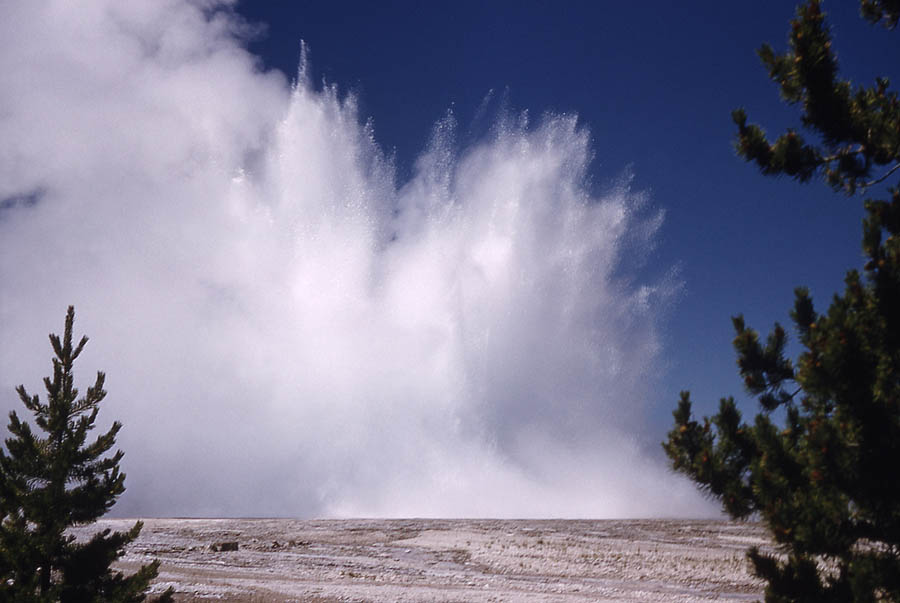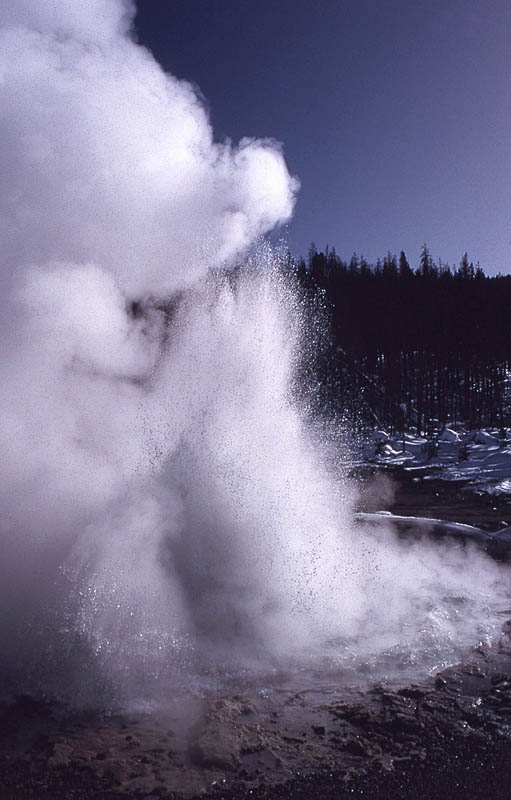
Morning Geyser, quiet for 18 years, is now active, and there is news that an electronic monitor on Echinus in Norris Geyser Basin picked up an eruption. North Goggles Geyser has also started erupting more regularly than the lone annual display it has typically shown over the past few years. The last time it was this active was 2004. Joining the list of newly reactivated thermal features are Fan and Mortar geysers, which may be beginning an active cycle.
Morning Geyser in the Lower Geyser Basin
Morning Geyser is one of the tallest and prettiest geysers in the Lower Geyser Basin. The wide eruptions have the potential of reaching 200 feet tall. It is located in the Fountain Paint Pots area, just behind Fountain Geyser. Morning Geyser last erupted in 1994. The first reported eruption this year occurred on Wed., June 20. A second eruption was reported the following day, with geyser gazers reporting online that Morning Geyser spewed for up to 30 minutes, reaching a height of 200 feet.
For the past few weeks, geyser gazer Maureen Edgerton has watched a change in her favorite geyser, Fountain Geyser, of longer intervals between eruptions than seen in recent years. It may be that there is a connection between Morning Geyser and Fountain Geyser, and a change in Fountain Geyser could result in changes in other thermal features in the area.
Edgerton's time spent watching the area paid off with the first eruption shortly after noon on Wednesday. She noticed it first from the road, and even though she knows the area well, she remained skeptical, Morning Geyser is often confused with bursts seen from other geysers in the area. But Edgerton became certain that it was Morning Geyser erupting as she turned around, parked and headed to the overlook.
How long will Morning Geyser continue erupting? That's hard to say, but based on past active cycles, it could be days or weeks. Then again, these two eruptions might be all that's seen for a while. But we hope it continues to delight us for awhile, and allows more people to check seeing this rare geyser in eruption off their list.
But for those of us not in the Park at the moment, thankfully, we can watch a past eruption.
Fan and Mortar Geysers in the Upper Geyser Basin
To the delight of many, it seems that on the June 9, Fan and Mortar geysers started what is expected to be another cycle of activity. Every couple of years, Fan and Mortar geysers take a break and go silent. Prior to this eruption, they were last known to erupt in October 2011. Sometimes they take longer breaks than this, but no one appeared disappointed by the short nap and their recent reawakening.
When active, they erupt about every 3-5 days, sometimes appearing to "prefer" nighttime eruptions. Let's hope this cycle sees more daytime eruptions.
Fan and Mortar Geysers are located in the Upper Geyser Basin, not far from Morning Glory Pool. Expect to see geyser gazers waiting there when it seems like an eruption is 'due' unless they all head to the more rare, Morning Geyser.
No further eruptions have been seen or noted by knowledgeable geyser enthusiasts, but one promising 'event cycle' was observed. It may take a bit longer for Fan and Mortar to fully reactivate.
Echinus Geyser in Norris Geyser Basin
The announcement of a third geyser reactivating came from an email sent to a geyser email list from Yellowstone National Park ranger Denise Herman, who relayed a message from Jacob B. Lowenstern, the scientist in charge of the U.S. Geological Survey'sYellowstone Volcano Observatory. Lowenstern noted that a temperature probe indicated that Echinus erupted at 3:25 a.m. on Mon., June 28, stating that "no one saw it, but it is the first known eruption since January 2011."





Reader Comments
to our Newsletter